THE UNTOUCHED BEAUTY OF NATURE CAPTIVATES NOT ONLY TOURISTS, BUT ALSO THOSE WHO WORK TO PROTECT IT. IRINA CHERDAKOVA, A VOLUNTEER, SHARED EXCLUSIVELY WITH “TOURISM & LEISURE IN RUSSIA” HER IMPRESSIONS OF WORK IN THE PECHORA-ILYCHSKY NATURE RESERVE IN THE REPUBLIC OF KOMI.
TEXT: ALEXEY EGOROV
PHOTO: AGRONOMU.COM / NORDIC-URAL.RU / EVGENY ANDROSOV /
IRINA CHERDAKOVA / PECHORA-ILYCHSKY RESERVE
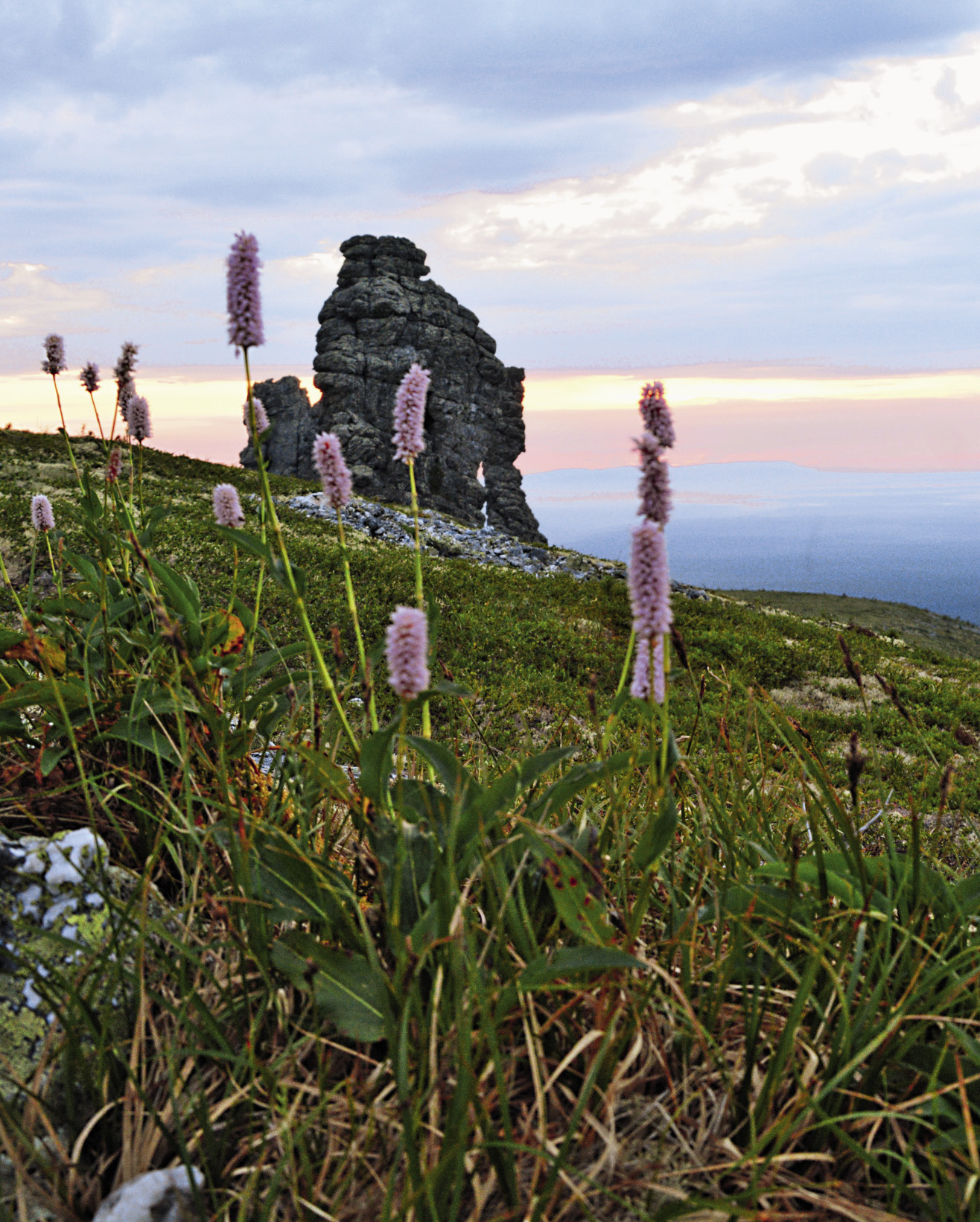
Back when I was a very young child, my family had a framed photograph of the Stone Pillars hanging in our kitchen.
I would point at it and say, “I want to go there!” The childhood dream remained just a dream until two years ago, when I learned that the company “Severny Ural” (Northern Ural) was recruiting volunteers to build an ecological trail on the Manpupuner plateau in the Pechora-Ilychsky Nature Reserve. Two weeks on the plateau! Food and accommodation included! It was a gift of fate. I packed my rucksack and was off. At the end of my two weeks there, I realized that I wasn’t ready to leave. I ended up spending the whole summer there, and came back in 2017, also for the summer season; I plan to do the same this summer.
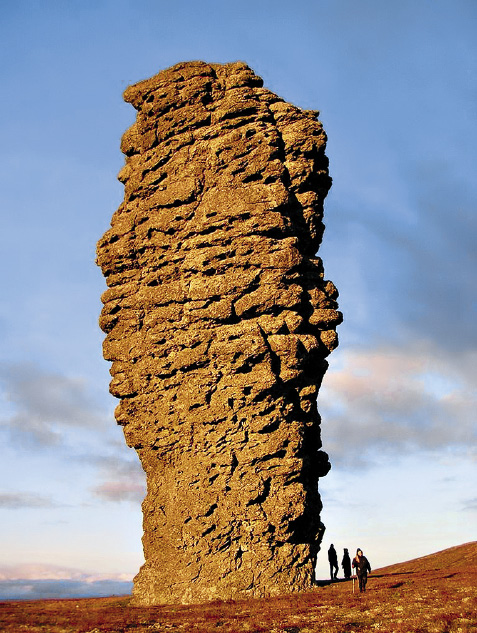
A Trail by the House
In 2016, together with the other volunteers, I was involved in building a path from the house of the Reserve’s inspectors to the Pillars themselves. We collected stones on the slopes, took them in barrels to the location of the future trail, crushed them with a stone crusher, and tamped them. We worked full days, from morning until evening. It was physically hard work, mosquitoes and midges were a nuisance, and sometimes the weather was horrible. At first it was difficult to keep up. We got tired, we cried, we put balms on our calluses and scratches. But once you get accustomed to it, all you ever notice is the unspeakable beauty around you — and the results of your labour. The plateau has damp areas where water collects. On their way to the Pillars tourists would try to avoid these damp areas and make new paths, thus destroying the natural landscape of the plateau. A year after our work first began, the trail laid out by the volunteers blended into the mountain’s landscape, and animals started using it too. The old paths remained only in mossy areas: moss regenerates very slowly.
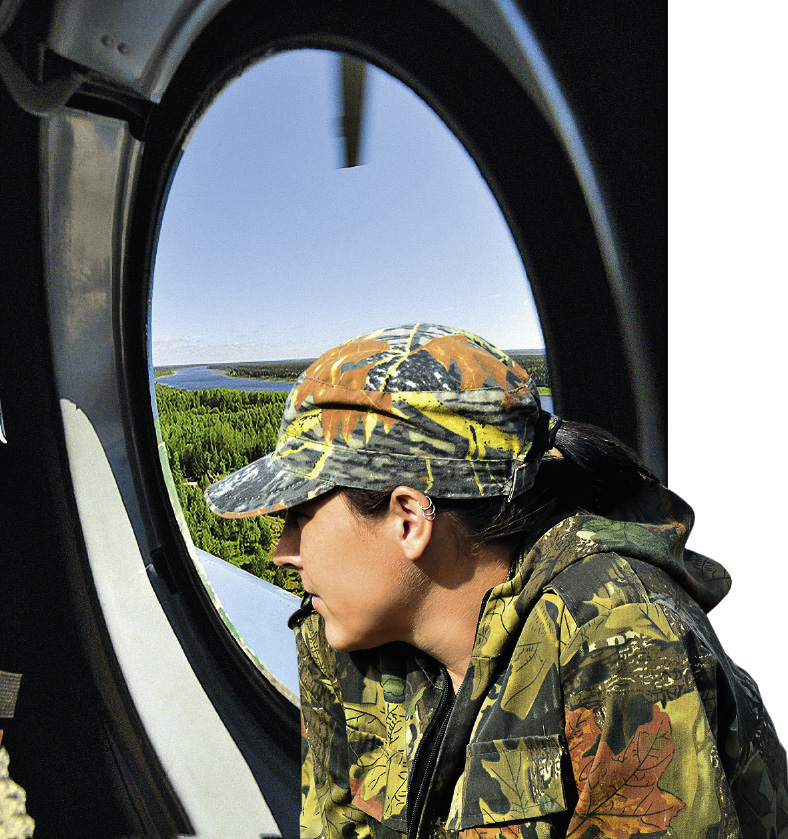
Last year, volunteers built a bridge across the Pechora River and two of its tributaries. Some volunteers from Lithuania and Great Britain tried so hard that on the first day — or rather in the first ten minutes — they managed to break two sledge hammers used for hammering the supports of the bridge into place! It was also then that some of the muddiest sections of the trail were covered with footbridges on stilts. These works are planned to be continued this year.
Two weeks on the plateau! Food and accommodation
included! It was a gift of fate. I packed my rucksack and
was off. At the end of my two weeks there, I realized that
I wasn’t ready to leave.
Girls March Ahead!
Last summer I wasn’t working with a sledge hammer. My task was to accompany groups of tourists from the Vologda border — the edge of the reserve — to the Pillars and back. We offer the tourists the chance to take part in the improvement of the route on a voluntary basis. Men would walk straight ahead with stakes on their shoulders, occasionally allowing themselves to swear. They simply could not throw their loads down — not when in front of them a young woman was walking along, carrying the same kind of stakes, saying, “Just throw it down if you’re tired!”
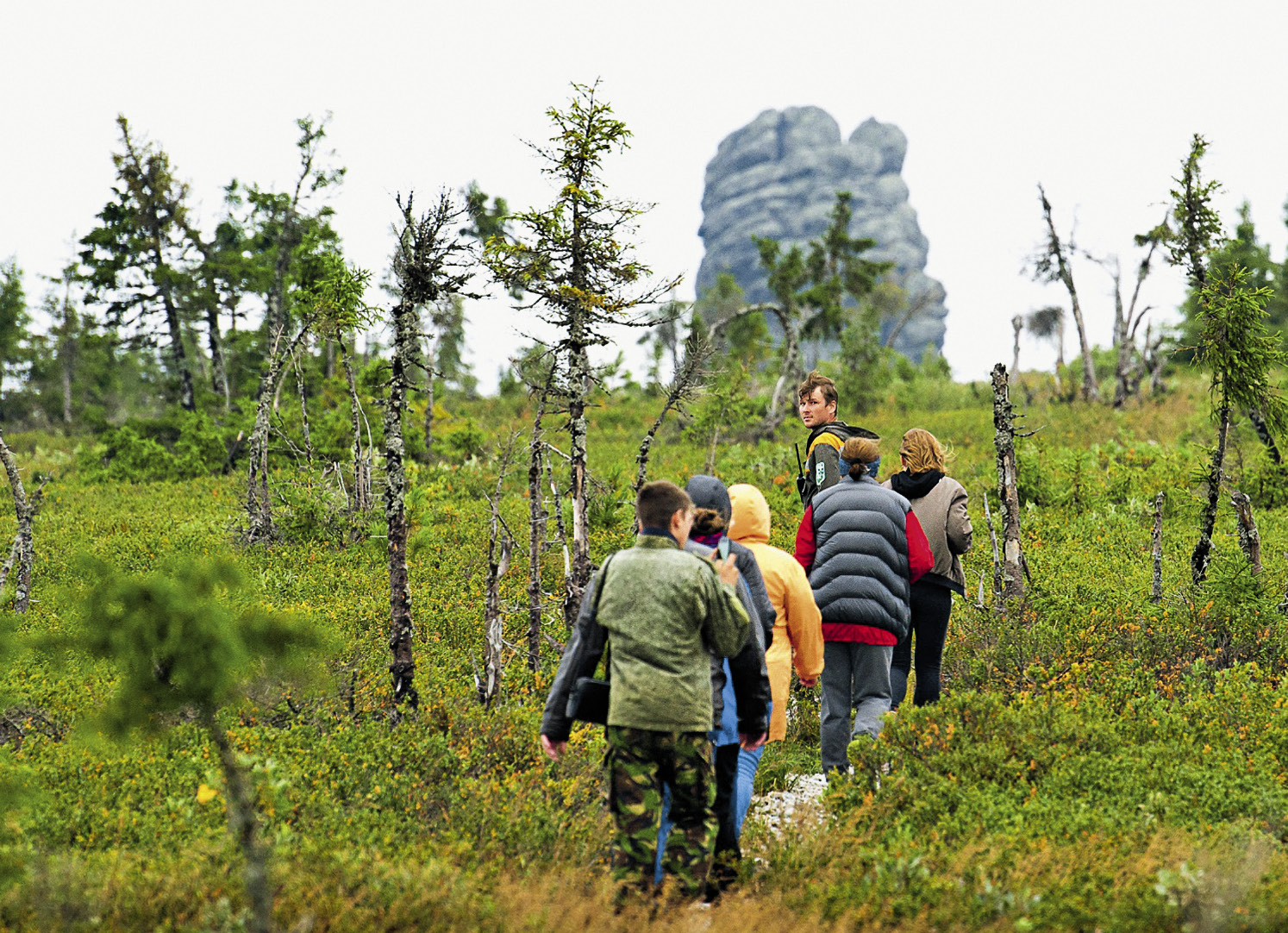
The number of volunteers helping out at the reserve varies from year to year. What doesn’t change is that they are always wonderful people. They’d go to the ends of the earth with you — or more appropriately, perhaps, to the heart of the forest. Most of them are family men. At the end of the day those strong, weather-beaten men would talk about missing their wives and children, and that was really very sweet!
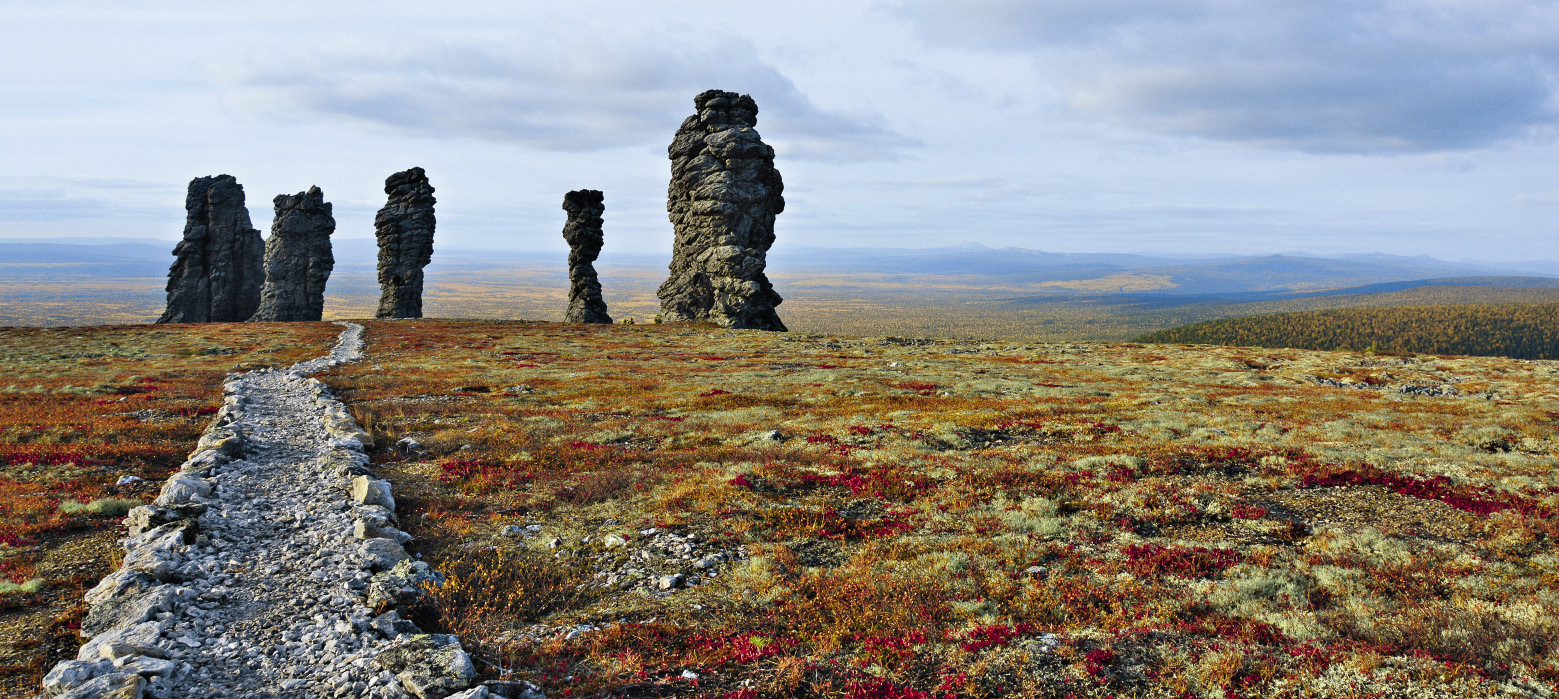
As for myself, well, a woman in the house always means tidiness and comfort. I was good at handling different rags, processing leftover food into pancakes, and motivating tourists to help us carry construction materials.
The absence of of a shower was the most difficult thing for me personally. We city dwellers take washing the dishes, showering or having a bath at any time of the day absolutely for granted. Here, tap water is non-existent, you must bring it. Every drop is precious. At some point, a helicopter brought us a sanitary module: a bath-house with a bio-toilet. That new addition put an end to our “wild” living.
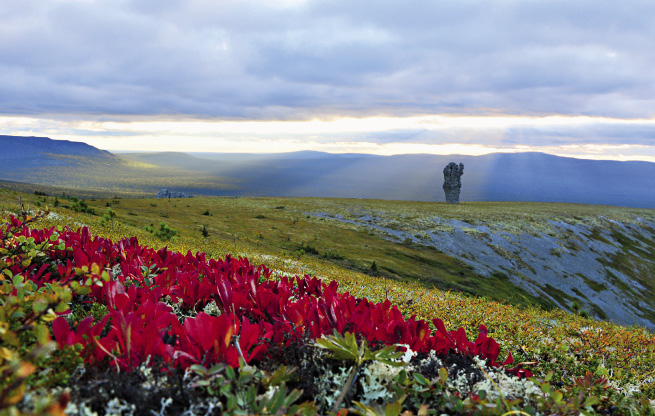
The tourist flow increases every year. Before the helipad and the trail were built, the reserve was closed to the public (apart from some illicit guests). Today 1,200 visitors per season are officially allowed. They fly in by helicopter, come on foot from the Dyatlov pass or from Ivdel, or by vehicle in ATVs and jeeps. Transport, of course, is only permitted to go as far as the edge of the reserve — the rest of the way to the Pillars is on foot only.

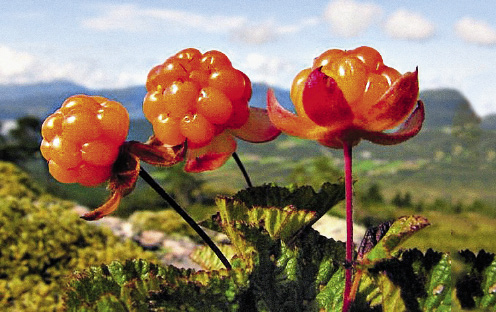
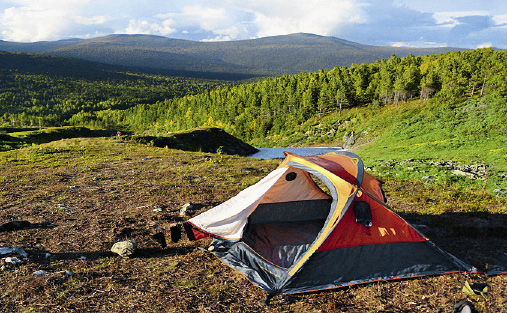
Many interesting people, all of them eager for adventure, have come here. I particularly recall one young lady who cut her leg on a stone and walked to the border of the reserve on pain killers. The guys who were there helped her out by carrying her things. They were running out of meds, and in fact, she needed surgery on her leg. We came to the Vologda boundary in the evening. A helicopter was due in the morning. She was to be evacuated, which meant that she would be missing her chance of going to the Pillars and back. In the morning, she was hysterical: the entire group was getting ready to walk to the plateau, leaving her behind. And yet she had walked all that way! Was it only to stop and turn around barely 10 kilometres from the destination she had dreamed of reaching! It was very difficult to get her to calm down and explain to her that health was of a far greater importance.
Before the helipad and the trail were built, the reserve was
closed to the public (apart from some illicit guests). Today
1,200 visitors per season are officially allowed. They fly in
by helicopter, or by vehicle in ATVs and jeeps.
My Wild Beasts
There are quite a few different zones on the reserve, each of them an attraction in itself, each in its own style and with its own inspectors — or “locals”. Take, for instance, the Torreporreiz, ridges of stunning beauty —the name translates from Mansi as “Stone City”. I had dreamed of seeing them, but it turned out that the territory was closed. Besides the Pillars, you can also visit our country’s first ever moose farm. Founded in 1949, it is located in the village of Yaksha. Another beautiful zone is Shezhym-Pechorsky. It stands on a small cliff on the Pechora river; several of the reserve’s pedestrian and water routes pass by it.
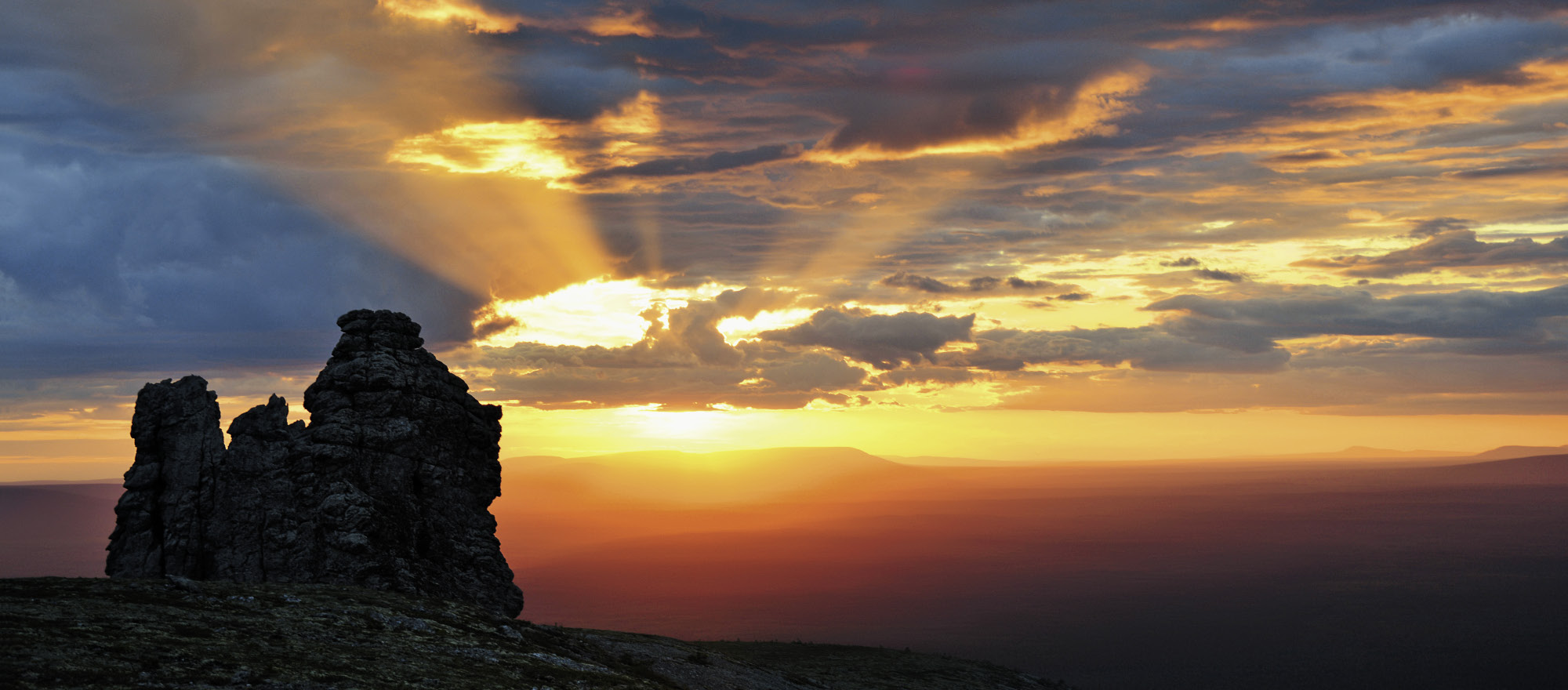
The landscapes of the reserve are beautiful at any time
of the year, but especially in late summer and early
autumn, when the mountain tundra is replete with an
abundance of colours and the northern berries ripen.
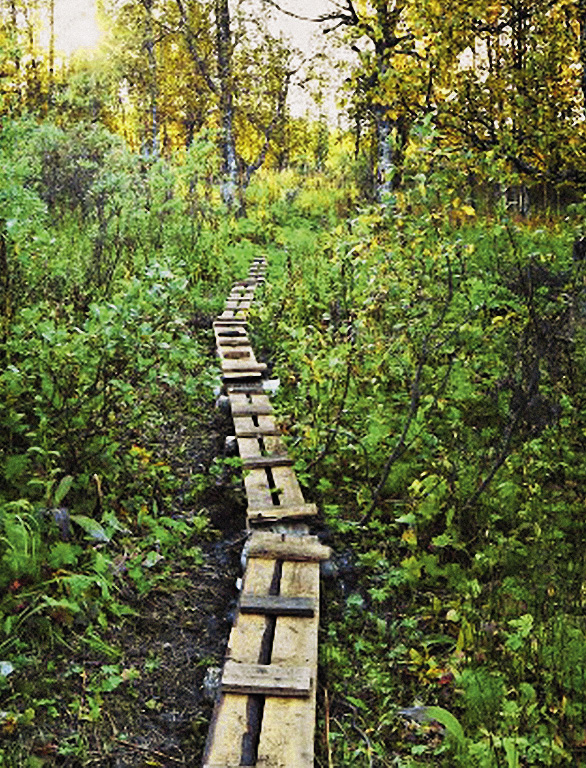
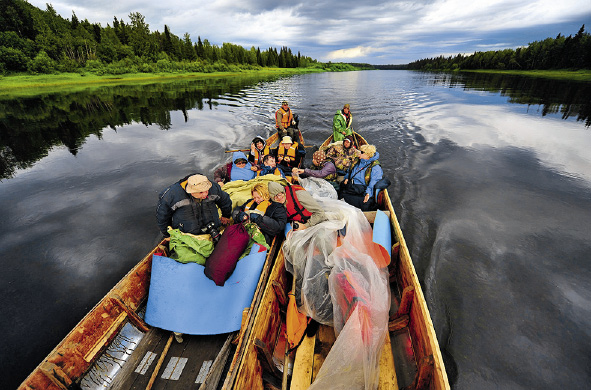
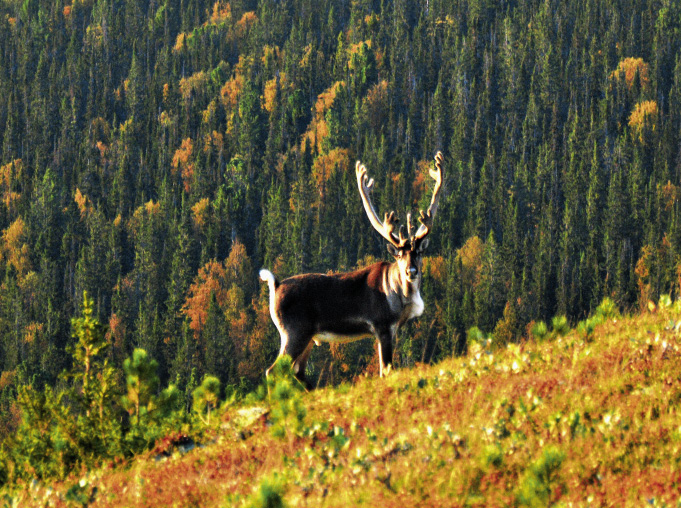
Bears frequented our trails, sometimes overturning the wooden walkways across swampy places as they played. To be on the safe side, I always carried bells with me. In theory, this was to warn the animals that I was approaching, so that they would get scared and leave. In reality, I once experienced the opposite. It was a warm sunny day. I was walking on an old track winding between the trees when, some 20 meters before the turn (I counted the steps later — when you’re afraid, you naturally exaggerate), I spotted something moving, and looked up. At that moment, a large hairy beast jumps from the path into the thicket and almost noiselessly makes its way through the fallen trees and driftwood into the wilderness. My first thought was: my, it’s so big and fluffy! At first, I wasn’t frightened or alarmed, but wondered to myself what touching its fur, so beautiful in the sun, would have felt like. And then, when I realized that the bear had heard and smelled me from afar, but stayed there to look at me out of curiosity, I felt afraid. Had the animal chosen to act differently, the outcome, too, would have been different.
One evening before going to bed, I went to the Pillars to watch some buzzards hunt at twilight. Ahead of me, perhaps a hundred meters away, I saw the silhouette of a fox next to the trail. I stopped, and the fox walked in my direction — I was jubilant that it was about to run right past me! But when the animal, having run up to two meters from me, lay down on the ground right there, I was shocked. I did not expect this from a wild animal. It was a very young, lean male fox… and a very curious one. I got down and sat motionless. We spent about ten minutes like that. Then the fox grew bolder, approached, pushed my sneaker with its nose, and then, tried to bite it. I untied the lace and handed it to the fox. A game began. Like a little playful dog, he pulled the lace with his teeth, tried to rip it from me, falling on his front legs and jumping around me. He didn’t allow me to touch him and didn’t follow me home. But he left me with a memory for life. TLR
HOW TO GET THERE
THE EASIEST, BUT ALSO THE MOST EXPENSIVE WAY TO VISIT THE PECHORA-ILYCHSKY NATURE RESERVE IS TO ORDER A HELICOPTER TOUR FROM PERM.
A ONE-DAY EXCURSION WILL COST YOU 45 THOUSAND ROUBLES (ABOUT $600). ANOTHER OPTION IS TO GATHER A GROUP OF FRIENDS, TAKE A TRAIN TO THE CITY OF IVDEL, ORDER A LOCAL “GAZ-66” OR A “URAL” TRANSFER TO THE AUSPIYA RIVER AND WALK WITH YOUR BACKPACKS ALONG THE TRAIL FOR ABOUT 110 KILOMETRES. YOU NEED TO GET A PASS TO THE RESERVE SIX MONTHS PRIOR.WHERE TO STAY
AS AN OPTION, YOU CAN STAY IN THE MOUNTAIN MODULES ON THE RESERVE’S TERRITORY ON THE VOLOGDA BOUNDARY.
IF YOU ARE HIKING OR SKIING, BRING TENTS. IN WINTER, YOU WILL NEED TWO- OR THREE-LAYER TENTS MADE WITH THE USE OF A STOVE IN MIND. LAST YEAR, A FIVE-DAY TRIP THAT INCLUDED COMING TO AND FROM BY HELICOPTER, ACCOMMODATION IN A MOUNTAIN CAMPING SITE AND DAILY TRIPS TO THE PLATEAU ON SNOWMOBILES COST 80 THOUSAND ROUBLES ($1,050).WHAT TO SEE
THE DYATLOV PASS, MOUNT OTORTEN AND THE STONE “GATE” AT ITS FOOT… IT WAS THIS MOUNTAIN THAT IGOR DYATLOV AND HIS TEAM WERE ATTEMPTING TO REACH BACK IN 1959, WHEN THE NOTORIOUS INCIDENT OCCURRED. IN THE VILLAGE OF YAKSHA YOU CAN PAY A VISIT TO THE WORLD’S FIRST ELK FARM.THE RESERVE FEATURES NUMEROUS SECTIONS, EACH UNIQUE IN ITS OWN WAY, BUT SHEZHYM-PECHORA IS PROBABLY THE MOST PICTURESQUE OF THEM ALL. DON’T MISS OUT ON A TRIP TO FIND THE SOURCE OF THE GREAT NORTHERN RIVER PECHORA IN THE MOUNTAINS.

